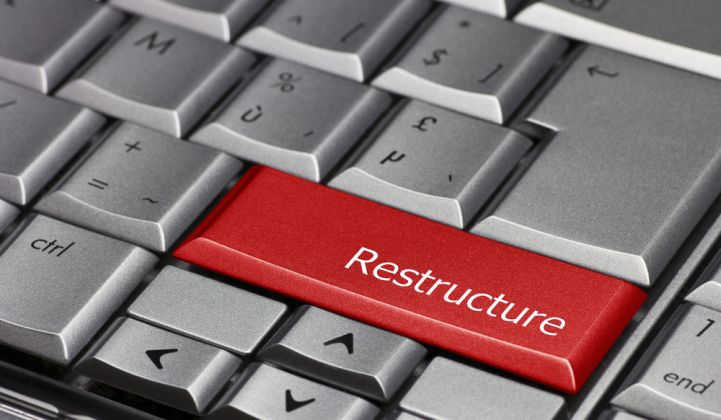EnerNOC announced on Friday it is restructuring its enterprise energy-efficiency software business to focus on specific verticals, rather than trying to sell to corporations across the board.
The restructuring means about 15 percent of EnerNOC’s employees will be laid off. Earlier this year, EnerNOC announced it would sell its utility engagement software business, which resulted in nearly 5 percent of employees being laid off.
Currently, the enterprise software division makes up about 20 percent of EnerNOC’s business, a transformation that took five years to achieve. Selling to corporations is easier than to selling to utilities, which is why EnerNOC decided to sell off its utility engagement software, but that doesn’t mean it is easy.
Energy efficiency is both an enormous untapped market opportunity and a complicated business proposition. It’s just not easy to make money selling energy-efficiency analytics. At the end of the day, most commercial customers still aren’t that savvy when it comes to tracking and tapping energy-efficiency opportunities. The same is true at the residential level; it's just not an item that ranks high on most people's priority lists.
“We are experiencing traction within a few key industries and with dozens of progressive enterprises that are ahead of their peers on the energy management maturity curve,” Tim Healy, EnerNOC’s CEO, said in a statement.
Because the world is seemingly never quite ready for deep energy-efficiency services, many market players today are chasing the same handful of sophisticated C&I companies that are thinking holistically about their energy procurement and use.
The competition comes from every direction, including classic energy services companies like Ecova, which purchased Retroficiency last year to help provide building data insights. There are legacy players such as GE, which wants to be a 21st-century energy services company with Current, and utilities like Edison International that also want to serve the large C&I sector.
For regulated utilities with efficiency dollars to spend, there is still a large untapped sector in the small and medium-size business space, which is often still about targeting the low-hanging fruit, such as more efficient lighting and better scheduling for HVAC.
EnerNOC, however, sells directly to corporate clients, rather than trying to help utilities better tap their C&I customers. For corporations, the drivers are often about meeting sustainability mandates and reducing energy risk, rather than simply achieving bottom-line savings.
As EnerNOC slims down its sales force to focus on core markets such as manufacturing and commercial real estate for its enterprise software, it continues to grow its bread-and-butter business of demand response globally, even as the demand response market has softened in recent years in North America.
EnerNOC is maintaining its third-quarter and full-year guidance and still expects to be cash flow positive by 2018. The Boston-based company's stock was up about 7 percent to just over $6 in Friday morning trading.



